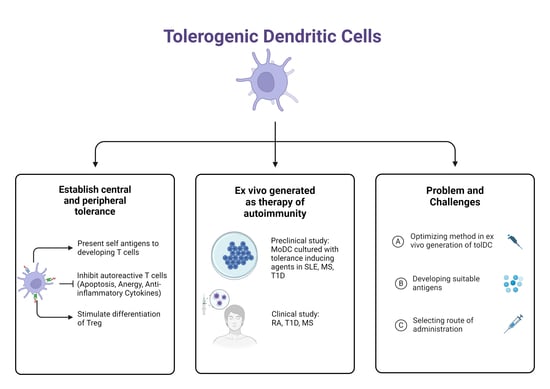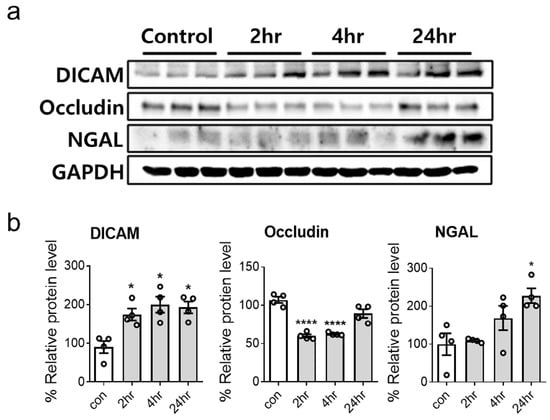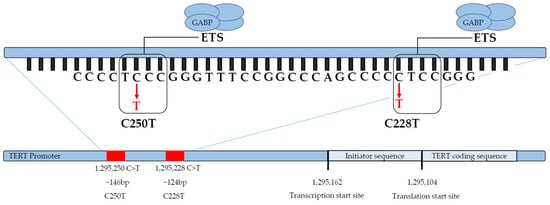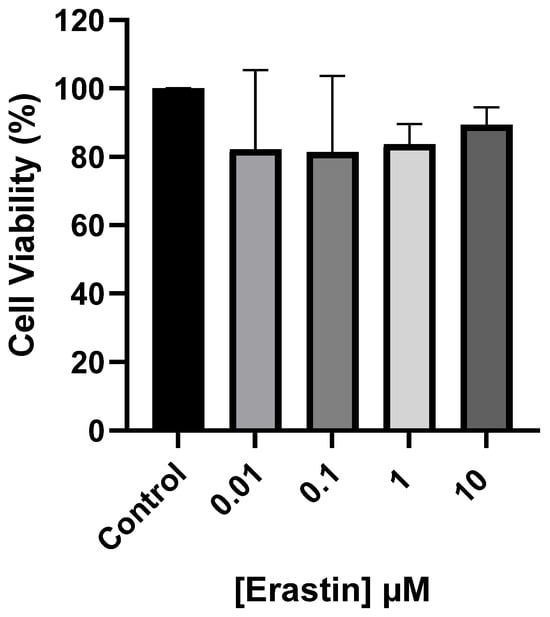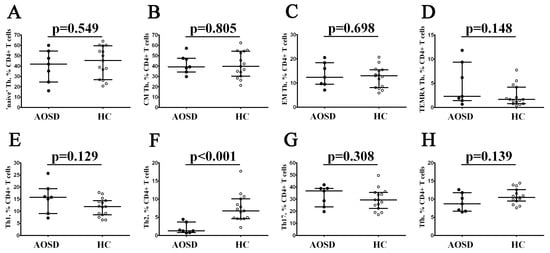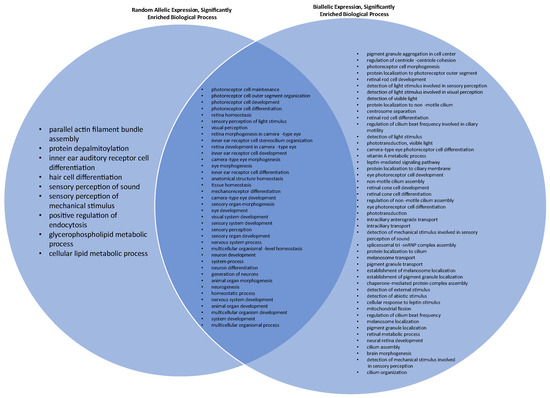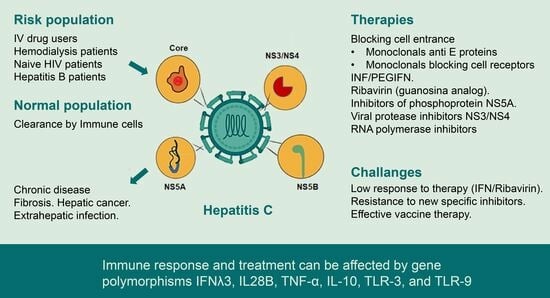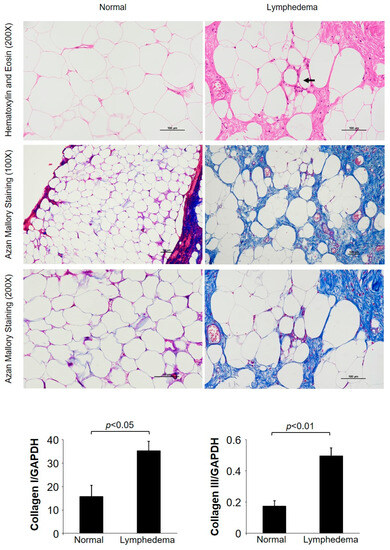Molecular Mechanisms in Human Diseases
Share This Topical Collection
Editor
 Dr. Roberto Campagna
Dr. Roberto Campagna
 Dr. Roberto Campagna
Dr. Roberto Campagna
E-Mail
Website
Guest Editor
Department of Clinical, Specialistic and Dental Sciences, Marche Polytechnic University, 60126 Ancona, Italy
Interests: cell proliferation; chemotherapeutic drugs; cancer; oxidative stress; paraoxonase-2; nicotinamide n-methyltransferase; metastasis
Special Issues, Collections and Topics in MDPI journals
Topical Collection Information
Dear Colleagues,
This topical collection focuses on molecular basis and molecular interactions involved in the development and progression of human diseases, as well as novel molecular biomarkers which could be suitable for diagnosis, prognosis and targeted therapies. Original research articles, reviews and short communications which fit the scope of the Topical Collection are welcome.
Identifying novel molecular mechanisms might help to implement cost effective early prevention and treatment. In the last decades, the identification of molecular mechanisms associated with specific human diseases led to the development of a number of novel drugs characterized by reduced side effects.
In this topical collection, we expect papers on the molecular mechanisms and interactions that comprehensively regulate cellular functions in human diseases, including but not limited to cell proliferation, growth, survival, death, inflammation and signaling observed in human pathological conditions. Studies on the molecular and cellular therapy of human diseases are also welcome.
Dr. Roberto Campagna
Guest Editor
Manuscript Submission Information
Manuscripts should be submitted online at www.mdpi.com by registering and logging in to this website. Once you are registered, click here to go to the submission form. Manuscripts can be submitted until the deadline. All submissions that pass pre-check are peer-reviewed. Accepted papers will be published continuously in the journal (as soon as accepted) and will be listed together on the collection website. Research articles, review articles as well as short communications are invited. For planned papers, a title and short abstract (about 100 words) can be sent to the Editorial Office for announcement on this website.
Submitted manuscripts should not have been published previously, nor be under consideration for publication elsewhere (except conference proceedings papers). All manuscripts are thoroughly refereed through a single-blind peer-review process. A guide for authors and other relevant information for submission of manuscripts is available on the Instructions for Authors page. Current Issues in Molecular Biology is an international peer-reviewed open access monthly journal published by MDPI.
Please visit the Instructions for Authors page before submitting a manuscript.
The Article Processing Charge (APC) for publication in this open access journal is 2200 CHF (Swiss Francs).
Submitted papers should be well formatted and use good English. Authors may use MDPI's
English editing service prior to publication or during author revisions.
Keywords
- molecular biomarker
- pathogenesis
- targeted therapy
- immunotherapy
- inflammation
- genomics
- signaling pathways
- cancer treatment
Published Papers (21 papers)
Open AccessReview
An Actual Insight into the Pathogenic Pathways of Ankylosing Spondylitis
by
Emilia-Daniela Păsăran, Andreea Elena Diaconu, Corina Oancea, Andra-Rodica Bălănescu, Sorina Maria Aurelian and Corina Homentcovschi
Viewed by 475
Abstract
Spondyloarthritis refers to a broad group of conditions that include ankylosing spondylitis, psoriatic arthritis, reactive arthritis, and enteropathic arthritis associated with Crohn’s disease or ulcerative colitis. They have been classified by the ASAS group (ASsessment in Ankylosing Spondylitis) into axial spondyloarthritis and peripheral
[...] Read more.
Spondyloarthritis refers to a broad group of conditions that include ankylosing spondylitis, psoriatic arthritis, reactive arthritis, and enteropathic arthritis associated with Crohn’s disease or ulcerative colitis. They have been classified by the ASAS group (ASsessment in Ankylosing Spondylitis) into axial spondyloarthritis and peripheral spondyloarthritis. Common features include the absence of autoantibodies, genetic predisposition, and clinical aspects such as axial joint involvement, peripheral manifestations, and extra-articular involvement. However, the pathogenic mechanisms remain complex and incompletely elucidated, despite the fact that the specialized literature has described several pathways that act in synergy: genetic predisposition, environmental factors (infections and mechanical stress), or innate and acquired immune mechanisms. Finally, an inflammatory response is triggered by the recruitment of a large number of inflammatory cells and the release of innate cytokines in the affected areas: joints or periarticular or extraarticular tissues. The current article aims to update and systematize the knowledge accumulated so far on this topic, focusing on the mechanisms that have been involved in the onset, progression, and severity of ankylosing spondylitis.
Full article
►▼
Show Figures
Open AccessArticle
Impact of Hyponatremia and ADH Secretion in MIS-C and COVID-19: An Integrative Approach of Prognostic and Diagnostic Markers
by
Diana-Andreea Ciortea, Carmen Loredana Petrea (Cliveți), Sorin Ion Berbece, Silvia Fotea, Iolanda Cristina Vivisenco, Gabriela Gurău, Mădălina Nicoleta Matei and Aurel Nechita
Viewed by 474
Abstract
The COVID-19 pandemic has introduced challenges in pediatric care, especially due to the emergence of Multisystem Inflammatory Syndrome in Children (MIS-C), a severe condition associated with SARS-CoV-2 infection. This study investigated the impact of hyponatremia and antidiuretic hormone (ADH) secretion corelated to clinical
[...] Read more.
The COVID-19 pandemic has introduced challenges in pediatric care, especially due to the emergence of Multisystem Inflammatory Syndrome in Children (MIS-C), a severe condition associated with SARS-CoV-2 infection. This study investigated the impact of hyponatremia and antidiuretic hormone (ADH) secretion corelated to clinical outcomes in these patients. We conducted a retrospective cohort study, including 118 pediatric patients, with a detailed sub-cohort analysis of 53 patients for ADH secretion markers. Hyponatremia, defined by age-specific sodium thresholds, was present in 47.22% of MIS-C cases and 28.04% of COVID-19 cases. Ordinal logistic regression analysis revealed that severe hyponatremia significantly increased the likelihood of more severe clinical outcomes (β = 3.514,
p < 0.001). A significant correlation was found between hyponatremia and prolonged hospitalization. For ADH secretion, a predictive model using ridge regression was analysed, which demonstrated that serum sodium level, U/P ratio, and hospitalization duration are key predictors of SIADH. This model fit was assessed using the ROC curve with an AUC of 0.96, indicating reliable model performance. Our findings underscore the significant role of hyponatremia on the clinical severity and hospitalization outcome of COVID-19 and MIS-C in pediatric patients.
Full article
►▼
Show Figures
Open AccessReview
Pathophysiology, Treatment, and Prognosis of Thrombocytopenia, Anasarca, Fever, Reticulin Fibrosis/Renal Failure, and Organomegaly (TAFRO) Syndrome: A Review
by
Takuya Kakutani, Riko Kamada and Yotaro Tamai
Viewed by 670
Abstract
TAFRO syndrome, first reported in 2010, is a systemic inflammatory disease with a rapid onset and potentially fatal course if not treated promptly and appropriately. The name is derived from the initial letters describing the characteristic symptoms of thrombocytopenia, anasarca, fever, reticulin fibrosis/renal
[...] Read more.
TAFRO syndrome, first reported in 2010, is a systemic inflammatory disease with a rapid onset and potentially fatal course if not treated promptly and appropriately. The name is derived from the initial letters describing the characteristic symptoms of thrombocytopenia, anasarca, fever, reticulin fibrosis/renal failure, and organomegaly. It is sometimes considered a special subtype of idiopathic multicentric Castleman disease (iMCD) because lymph node biopsies often reveal the pathology findings seen in iMCD. However, its clinical manifestations and prognoses are not well documented. Since the clinical manifestations and prognoses of TAFRO syndrome differ significantly from those of iMCD, it is recognized as an independent disease concept and considered to partially overlap with the pathology of MCD. The pathogenesis of TAFRO syndrome remains largely unknown. Due to the lack of appropriate treatment, it often presents with multiple organ dysfunction and fatality. In this review, we summarized new findings on the pathogenesis of TAFRO syndrome and discussed current effective therapies and future treatment strategies.
Full article
►▼
Show Figures
Open AccessArticle
Integrative Analyses of Mitophagy-Related Genes and Mechanisms Associated with Type 2 Diabetes in Muscle Tissue
by
Wangjia Mao, Guannan Zong, Yuan Gao, Shen Qu and Xiaoyun Cheng
Viewed by 621
Abstract
Type 2 diabetes (T2D) represents the most prevalent metabolic condition that is primarily distinguished by a range of metabolic imbalances, including hyperglycemia, hyperlipidemia, and insulin resistance (IR). Currently, mitophagy has become increasingly recognized as an important process involved in the pathogenesis and progression
[...] Read more.
Type 2 diabetes (T2D) represents the most prevalent metabolic condition that is primarily distinguished by a range of metabolic imbalances, including hyperglycemia, hyperlipidemia, and insulin resistance (IR). Currently, mitophagy has become increasingly recognized as an important process involved in the pathogenesis and progression of T2D. Therefore, it is very important to explore the role of mitochondrial damage and autophagy-related genes in T2D. This study investigated the role of mitophagy in the development of T2D, and 12 MRHGs associated with T2D were identified using bioinformatic analysis and machine learning methods. Our findings provide the first insight into mitophagy-related genes and their mechanisms in T2D. This study aimed to investigate possible molecular targets for therapy and the underlying mechanisms involved in T2D. This information might be useful to further elucidate the pathogenesis of T2D-related diseases and identify more optimal therapeutic approaches.
Full article
►▼
Show Figures
Open AccessCase Report
A New Case of Paediatric Systemic Lupus Erythematosus with Onset after SARS-CoV-2 and Epstein-Barr Infection—A Case Report and Literature Review
by
Carmen Loredana Petrea (Cliveți), Diana-Andreea Ciortea, Magdalena Miulescu, Iuliana-Laura Candussi, Sergiu Ioachim Chirila, Gabriela Isabela Verga (Răuță), Simona-Elena Bergheș, Mihai Ciprian Râșcu and Sorin Ion Berbece
Cited by 4 | Viewed by 1246
Abstract
Viral infections caused by exposure to viruses such as Epstein–Barr, cytomegalovirus, or Parvovirus B19 have always been considered predisposing environmental factors for the onset of autoimmune diseases. More recently, autoimmune mechanisms such as molecular mimicry, T-cell activation, transient immunosuppression and inflammation have also
[...] Read more.
Viral infections caused by exposure to viruses such as Epstein–Barr, cytomegalovirus, or Parvovirus B19 have always been considered predisposing environmental factors for the onset of autoimmune diseases. More recently, autoimmune mechanisms such as molecular mimicry, T-cell activation, transient immunosuppression and inflammation have also been observed in cases of SARS-CoV-2 infection. Several newly diagnosed autoimmune disorders have been reported post-COVID-19, such as COVID-19-associated multisystemic inflammatory syndrome in children (MIS-C), type 1 diabetes mellitus, systemic lupus erythematosus, or rheumatoid arthritis. In this article, we present a new case of paediatric systemic lupus erythematosus (SLE) with haematological (macrophage activation syndrome), renal (stage 2), cutaneous (urticarial vasculitis) and digestive involvement, onset three and a half months post-COVID-19. In the dynamics, de novo infection generated by Epstein–Barr exposure was associated. The diagnosis was confirmed based on EULAR/ACR 2019 criteria. The aim of the article is to present a possible correlation between SARS-CoV-2 and Epstein–Barr as extrinsic factors in triggering or activating paediatric systemic lupus erythematosus. Keywords: paediatric systemic lupus erythematosus; post-COVID-19; Epstein–Barr; SARS- CoV-2; case report; paediatric patient.
Full article
Open AccessReview
The Role of Estrogen across Multiple Disease Mechanisms
by
Xiuting Xiang, Praneetha Palasuberniam and Rahmawati Pare
Viewed by 1463
Abstract
Estrogen is a significant hormone that is involved in a multitude of physiological and pathological processes. In addition to its pivotal role in the reproductive system, estrogen is also implicated in the pathogenesis of a multitude of diseases. Nevertheless, previous research on the
[...] Read more.
Estrogen is a significant hormone that is involved in a multitude of physiological and pathological processes. In addition to its pivotal role in the reproductive system, estrogen is also implicated in the pathogenesis of a multitude of diseases. Nevertheless, previous research on the role of estrogen in a multitude of diseases, including Alzheimer’s disease, depression, cardiovascular disease, diabetes, osteoporosis, gastrointestinal diseases, and estrogen-dependent cancers, has concentrated on a single disease area, resulting in a lack of comprehensive understanding of cross-disease mechanisms. This has brought some challenges to the current treatment methods for these diseases, because estrogen as a potential therapeutic tool has not yet fully developed its potential. Therefore, this review aims to comprehensively explore the mechanism of estrogen in these seven types of diseases. The objective of this study is to describe the relationship between each disease and estrogen, including the ways in which estrogen participates in regulating disease mechanisms, and to outline the efficacy of estrogen in treating these diseases in clinical practice. By studying the role of estrogen in a variety of disease mechanisms, it is hoped that a more accurate theoretical basis and clinical guidance for future treatment strategies will be provided, thus promoting the effective management and treatment of these diseases.
Full article
►▼
Show Figures
Open AccessArticle
Epigenetic and Molecular Alterations in Obesity: Linking CRP and DNA Methylation to Systemic Inflammation
by
Ciprian Cucoreanu, Adrian-Bogdan Tigu, Madalina Nistor, Radu-Cristian Moldovan, Ioana-Ecaterina Pralea, Maria Iacobescu, Cristina-Adela Iuga, Robert Szabo, George-Calin Dindelegan and Constatin Ciuce
Cited by 1 | Viewed by 1068
Abstract
Obesity is marked by excessive fat accumulation in the adipose tissue, which disrupts metabolic processes and causes chronic systemic inflammation. Commonly, body mass index (BMI) is used to assess obesity-related risks, predicting potential metabolic disorders. However, for a better clustering of obese patients,
[...] Read more.
Obesity is marked by excessive fat accumulation in the adipose tissue, which disrupts metabolic processes and causes chronic systemic inflammation. Commonly, body mass index (BMI) is used to assess obesity-related risks, predicting potential metabolic disorders. However, for a better clustering of obese patients, we must consider molecular and epigenetic changes which may be responsible for inflammation and metabolic changes. Our study involved two groups of patients, obese and healthy donors, on which routine analysis were performed, focused on BMI, leukocytes count, and C-reactive protein (CRP) and completed with global DNA methylation and gene expression analysis for genes involved in inflammation and adipogenesis. Our results indicate that obese patients exhibited elevated leukocytes levels, along with increased BMI and CRP. The obese group revealed a global hypomethylation and upregulation of proinflammatory genes, with adipogenesis genes following the same trend of being overexpressed. The study confirms that obesity is linked to systematic inflammation and metabolic dysfunction through epigenetic and molecular alterations. The CRP was correlated with the hypomethylation status in obese patients, and this fact may contribute to a better understanding of the roles of specific genes in adipogenesis and inflammation, leading to a better personalized therapy.
Full article
►▼
Show Figures
Open AccessArticle
Free Salivary Amino Acid Profile in Breast Cancer: Clinicopathological and Molecular Biological Features
by
Lyudmila V. Bel’skaya, Elena A. Sarf and Denis V. Solomatin
Cited by 2 | Viewed by 1279
Abstract
The study of salivary amino acid profiles has attracted the attention of researchers, since amino acids are actively involved in most metabolic processes, including breast cancer. In this study, we analyzed the amino acid profile of saliva in a sample including all molecular
[...] Read more.
The study of salivary amino acid profiles has attracted the attention of researchers, since amino acids are actively involved in most metabolic processes, including breast cancer. In this study, we analyzed the amino acid profile of saliva in a sample including all molecular biological subtypes of breast cancer to obtain a more complete picture and evaluate the potential utility of individual amino acids or their combinations for diagnostic purposes. This study included 116 patients with breast cancer, 24 patients with benign breast disease, and 25 healthy controls. From all patients, strictly before the start of treatment, saliva samples were collected, and the quantitative content of 26 amino acids was determined. Statistically significant differences between the three groups are shown in the content of Asp, Gly, Leu + Ile, Orn, Phe, Pro, Thr, and Tyr. To differentiate the three groups from each other, a decision tree was built. To construct it, we selected those amino acids for which the change in concentrations in the subgroups was multidirectional (GABA, Hyl, Arg, His, Pro, and Car). For the first time, it is shown that the amino acid profile of saliva depends on the molecular biological subtype of breast cancer. The most significant differences are shown for the luminal B HER2-positive and TNBC subgroups. In our opinion, it is critically important to consider the molecular biological subtype of breast cancer when searching for potential diagnostic markers.
Full article
►▼
Show Figures
Open AccessReview
Molecular Biological Research on the Pathogenic Mechanism of Retinoblastoma
by
Xiangyi Ma, Xinyu Li, Qi Sun, Fuxiao Luan and Jing Feng
Viewed by 1452
Abstract
Retinoblastoma (RB) is the most common intraocular malignant tumor in children, primarily attributed to the bi-allelic loss of the
RB1 gene in the developing retina. Despite significant progress in understanding the basic pathogenesis of RB, comprehensively unravelling the intricate network of genetics and
[...] Read more.
Retinoblastoma (RB) is the most common intraocular malignant tumor in children, primarily attributed to the bi-allelic loss of the
RB1 gene in the developing retina. Despite significant progress in understanding the basic pathogenesis of RB, comprehensively unravelling the intricate network of genetics and epigenetics underlying RB tumorigenesis remains a major challenge. Conventional clinical treatment options are limited, and despite the continuous identification of genetic loci associated with cancer pathogenesis, the development of targeted therapies lags behind. This review focuses on the reported genomic and epigenomic alterations in retinoblastoma, summarizing potential therapeutic targets for RB and providing insights for research into targeted therapies.
Full article
►▼
Show Figures
Open AccessReview
Adverse Skeletal Muscle Adaptations in Individuals Born Preterm—A Comprehensive Review
by
Nick L. Dobson, Danielle E. Levitt, Hui Ying Luk and Heather L. Vellers
Cited by 1 | Viewed by 1671
Abstract
Infants born preterm face an increased risk of deleterious effects on lung and brain health that can significantly alter long-term function and quality of life and even lead to death. Moreover, preterm birth is also associated with a heightened risk of diabetes and
[...] Read more.
Infants born preterm face an increased risk of deleterious effects on lung and brain health that can significantly alter long-term function and quality of life and even lead to death. Moreover, preterm birth is also associated with a heightened risk of diabetes and obesity later in life, leading to an increased risk of all-cause mortality in young adults born prematurely. While these preterm-birth-related conditions have been well characterized, less is known about the long-term effects of preterm birth on skeletal muscle health and, specifically, an individual’s skeletal muscle hypertrophic potential later in life. In this review, we discuss how a confluence of potentially interrelated and self-perpetuating elements associated with preterm birth might converge on anabolic and catabolic pathways to ultimately blunt skeletal muscle hypertrophy, identifying critical areas for future research.
Full article
►▼
Show Figures
Open AccessReview
Ex Vivo-Generated Tolerogenic Dendritic Cells: Hope for a Definitive Therapy of Autoimmune Diseases
by
Jonny, Enda Cindylosa Sitepu, Chairul A. Nidom, Soetojo Wirjopranoto, I. Ketut Sudiana, Arif N. M. Ansori and Terawan Agus Putranto
Cited by 1 | Viewed by 1807
Abstract
Current therapies for autoimmune diseases are immunosuppressant agents, which have many debilitating side effects. However, dendritic cells (DCs) can induce antigen-specific tolerance. Tolerance restoration mediated by ex vivo-generated DCs can be a therapeutic approach. Therefore, in this review, we summarize the conceptual framework
[...] Read more.
Current therapies for autoimmune diseases are immunosuppressant agents, which have many debilitating side effects. However, dendritic cells (DCs) can induce antigen-specific tolerance. Tolerance restoration mediated by ex vivo-generated DCs can be a therapeutic approach. Therefore, in this review, we summarize the conceptual framework for developing ex vivo-generated DC strategies for autoimmune diseases. First, we will discuss the role of DCs in developing immune tolerance as a foundation for developing dendritic cell-based immunotherapy for autoimmune diseases. Then, we also discuss relevant findings from pre-clinical and clinical studies of ex vivo-generated DCs for therapy of autoimmune diseases. Finally, we discuss problems and challenges in dendritic cell therapy in autoimmune diseases. Throughout the article, we discuss autoimmune diseases, emphasizing SLE.
Full article
►▼
Show Figures
Open AccessBrief Report
Dual Immunoglobulin Domain-Containing Cell Adhesion Molecule Increases Early in Renal Tubular Cell Injury and Plays Anti-Inflammatory Role
by
Jin Han, Ju-Min Yook, Se-Hyun Oh, Yu Kyung Chung, Hee-Yeon Jung, Ji-Young Choi, Jang-Hee Cho, Sun-Hee Park, Chan-Duck Kim, Yong-Lim Kim, Seungwoo Han and Jeong-Hoon Lim
Viewed by 1395
Abstract
Dual immunoglobulin domain-containing cell adhesion molecule (DICAM) is a type I transmembrane protein that presents in various cells including renal tubular cells. This study evaluated the expression and protective role of DICAM in renal tubular cell injury. HK-2 cells were incubated and treated
[...] Read more.
Dual immunoglobulin domain-containing cell adhesion molecule (DICAM) is a type I transmembrane protein that presents in various cells including renal tubular cells. This study evaluated the expression and protective role of DICAM in renal tubular cell injury. HK-2 cells were incubated and treated with lipopolysaccharide (LPS, 30 μg/mL) or hydrogen peroxide (H
2O
2, 100 μM) for 24 h. To investigate the effect of the gene silencing of DICAM, small interfering RNA of DICAM was used. Additionally, to explain its role in cellular response to injury, DICAM was overexpressed using an adenoviral vector. DICAM protein expression levels significantly increased following treatment with LPS or H
2O
2 in HK-2 cells. In response to oxidative stress, DICAM showed an earlier increase (2–4 h following treatment) than neutrophil gelatinase-associated lipocalin (NGAL) (24 h following treatment). DICAM gene silencing increased the protein expression of inflammation-related markers, including IL-1β, TNF-α, NOX4, integrin β1, and integrin β3, in H
2O
2-induced HK-2 cell injury. Likewise, in the LPS-induced HK-2 cell injury, DICAM knockdown led to a decrease in occludin levels and an increase in integrin β3, IL-1β, and IL-6 levels. Furthermore, DICAM overexpression followed by LPS-induced HK-2 cell injury resulted in an increase in occludin levels and a decrease in integrin β1, integrin β3, TNF-α, IL-1β, and IL-6 levels, suggesting an alleviating effect on inflammatory responses. DICAM was elevated in the early stage of regular tubular cell injury and may protect against renal tubular injury through its anti-inflammatory properties. DICAM has a potential as an early diagnostic marker and therapeutic target for renal cell injury.
Full article
►▼
Show Figures
Open AccessArticle
Prevalence of TERT Promoter Mutations in Orbital Solitary Fibrous Tumors
by
David Sinan Koca, Vladimir Kolpakov, Jana Ihlow, Maximilian von Laffert, Katharina Erb-Eigner, Hermann Herbst, Karen Kriese, Leonille Schweizer and Eckart Bertelmann
Viewed by 1314
Abstract
The orbital manifestation of a solitary fibrous tumor (SFT) is exceptionally rare and poses specific challenges in diagnosis and treatment. Its rather exceptional behavior among all SFTs comprises a high tendency towards local recurrence, but it rarely culminates in metastatic disease. This raises
[...] Read more.
The orbital manifestation of a solitary fibrous tumor (SFT) is exceptionally rare and poses specific challenges in diagnosis and treatment. Its rather exceptional behavior among all SFTs comprises a high tendency towards local recurrence, but it rarely culminates in metastatic disease. This raises the question of prognostic factors in orbital SFTs (oSFTs). Telomerase reverse transcriptase (
TERT)-promoter mutations have previously been linked to an unfavorable prognosis in SFTs of other locations. We analyzed the prevalence of
TERT promoter mutations of SFTs in the orbital compartment. We performed a retrospective, descriptive clinico-histopathological analysis of nine cases of oSFTs between the years of 2017 and 2021. A
TERT promoter mutation was present in one case, which was classified with intermediate metastatic risk. Local recurrence or progress occurred in six cases after primary resection; no distant metastases were reported. Multimodal imaging repeatedly showed particular morphologic patterns, including tubular vascular structures and ADC reduction. The prevalence of the
TERT promoter mutation in oSFT was 11%, which is similar to the prevalence of extra-meningeal SFTs of the head and neck and lower than that in other extra-meningeal compartments. In the present study, the
TERT promoter mutation in oSFT manifested in a case with an unfavorable prognosis, comprising aggressive local tumor growth, local recurrence, and eye loss.
Full article
►▼
Show Figures
Open AccessArticle
A Smooth Muscle Cell-Based Ferroptosis Model to Evaluate Iron-Chelating Molecules for Cardiovascular Disease Treatment
by
Sarah El Hajj, Laetitia Canabady-Rochelle, Isabelle Fries-Raeth and Caroline Gaucher
Viewed by 1493
Abstract
Dysregulation of iron homeostasis causes iron-mediated cell death, recently described as ferroptosis. Ferroptosis is reported in many chronic diseases, such as hepatic cancer, renal, and cardiovascular diseases (heart failure, atherosclerosis). However, there is a notable scarcity of research studies in the existing literature
[...] Read more.
Dysregulation of iron homeostasis causes iron-mediated cell death, recently described as ferroptosis. Ferroptosis is reported in many chronic diseases, such as hepatic cancer, renal, and cardiovascular diseases (heart failure, atherosclerosis). However, there is a notable scarcity of research studies in the existing literature that explore treatments capable of preventing ferroptosis. Additionally, as far as the author is aware, there is currently no established model for studying ferroptosis within cardiovascular cells, which would be essential for assessing metal-chelating molecules with the potential ability to inhibit ferroptosis and their application in the treatment of cardiovascular diseases. In this study, a smooth muscle cell-based ferroptosis model is developed upon the inhibition of the system X
c− transporter by erastin associated or not with Fe(III) overload, and its rescue upon the introduction of well-known iron chelators, deferoxamine and deferiprone. We showed that erastin alone decreased the intracellular concentration of glutathione (GSH) without affecting peroxidized lipid concentrations. Erastin with ferric citrate was able to decrease intracellular GSH and induce lipid peroxidation after overnight incubation. Only deferiprone was able to rescue the cells from ferroptosis by decreasing lipid peroxidation via iron ion chelation in a 3:1 molar ratio.
Full article
►▼
Show Figures
Open AccessArticle
Deep Immunophenotyping of Circulating T and B Cells in Relapsing Adult-Onset Still’s Disease
by
Valentina Myachikova, Igor Kudryavtsev, Artem Rubinstein, Arthur Aquino, Dmitry Isakov, Alexey Golovkin and Alexey Maslyanskiy
Viewed by 1412
Abstract
Adult-onset Still’s disease (AOSD) is a complex systemic inflammatory disorder, categorized as an ‘IL-1 driven’ inflammasomapathy. Despite this, the interaction between T and B cells remains poorly understood. We conducted a study, enrolling 7 patients with relapsing AOSD and 15 healthy control subjects,
[...] Read more.
Adult-onset Still’s disease (AOSD) is a complex systemic inflammatory disorder, categorized as an ‘IL-1 driven’ inflammasomapathy. Despite this, the interaction between T and B cells remains poorly understood. We conducted a study, enrolling 7 patients with relapsing AOSD and 15 healthy control subjects, utilizing deep flow cytometry analysis to examine peripheral blood T- and B-cell subsets. T-cell and B-cell subsets were significantly altered in patients with AOSD. Within CD4+ T cells, Th2 cells were decreased. Additionally, Th17 cell and follicular Th cell subsets were altered within CD45RA–CD62L+ and CD45RA–CD62L– Th cells in patients with AOSD compared to healthy controls. We identified changes in CD8+ T cell maturation and ‘polarization’ in AOSD patients, with an elevated presence of the TEMRA CD8+ T cell subset. Furthermore, the percentage of Tc1 cells was decreased, while the frequency of CCR6–CXCR3– Tc2 cells was elevated. Finally, we determined that the frequency of CD5+CD27– B cells was dramatically decreased in patients with AOSD compared to healthy controls. Further investigations on a large group of patients with AOSD are required to evaluate these adaptive immunity cells in the disease pathogenesis.
Full article
►▼
Show Figures
Open AccessBrief Report
Random Allelic Expression in Inherited Retinal Disease Genes
by
Collin J. Richards and Jose S. Pulido
Viewed by 1262
Abstract
Inherited retinal diseases (IRDs) are a significant contributor to visual loss in children and young adults, falling second only to diabetic retinopathy. Understanding the pathogenic mechanisms of IRDs remains paramount. Some autosomal genes exhibit random allelic expression (RAE), similar to X-chromosome inactivation. This
[...] Read more.
Inherited retinal diseases (IRDs) are a significant contributor to visual loss in children and young adults, falling second only to diabetic retinopathy. Understanding the pathogenic mechanisms of IRDs remains paramount. Some autosomal genes exhibit random allelic expression (RAE), similar to X-chromosome inactivation. This study identifies RAE genes in IRDs. Genes in the Retinal Information Network were cross-referenced with the recent literature to identify expression profiles, RAE, or biallelic expression (BAE). Loss-of-function intolerance (LOFI) was determined by cross-referencing the existing literature. Molecular and biological pathways that are significantly enriched were evaluated using gene ontology. A total of 184 IRD-causing genes were evaluated. Of these, 31 (16.8%) genes exhibited RAE. LOFI was exhibited in 6/31 (19.4%) of the RAE genes and 18/153 (11.8%) of the BAE genes. Brain tissue exhibited BAE in 107/128 (83.6%) genes for both sexes. The molecular pathways significantly enriched among BAE genes were photoreceptor activity, tubulin binding, and nucleotide/ribonucleotide binding. The biologic pathways significantly enriched for RAE genes were equilibrioception, parallel actin filament bundle assembly, photoreceptor cell outer segment organization, and protein depalmitoylation. Allele-specific expression may be a mechanism underlying IRD phenotypic variability, with clonal populations of embryologic precursor cells exhibiting RAE. Brain tissue preferentially exhibited BAE, possibly due to selective pressures against RAE. Pathways critical for cellular and visual function were enriched in BAE, which may offer a survival benefit.
Full article
►▼
Show Figures
Open AccessReview
A Synopsis of Hepatitis C Virus Treatments and Future Perspectives
by
Christian Medina, Alexis Hipólito García, Francis Isamarg Crespo, Félix Isidro Toro, Soriuska José Mayora and Juan Bautista De Sanctis
Cited by 4 | Viewed by 3885
Abstract
Hepatitis C virus (HCV) infection is a worldwide public health problem. Chronic infection with HCV can lead to liver cirrhosis or cancer. Although some immune-competent individuals can clear the virus, others develop chronic HCV disease due to viral mutations or an impaired immune
[...] Read more.
Hepatitis C virus (HCV) infection is a worldwide public health problem. Chronic infection with HCV can lead to liver cirrhosis or cancer. Although some immune-competent individuals can clear the virus, others develop chronic HCV disease due to viral mutations or an impaired immune response. IFNs type I and III and the signal transduction induced by them are essential for a proper antiviral effect. Research on the viral cycle and immune escape mechanisms has formed the basis of therapeutic strategies to achieve a sustained virological response (SVR). The first therapies were based on IFNα; then, IFNα plus ribavirin (IFN–RBV); and then, pegylated-IFNα-RBV (PEGIFNα-RIV) to improve cytokine pharmacokinetics. However, the maximum SVR was 60%, and several significant side effects were observed, decreasing patients’ treatment adherence. The development of direct-acting antivirals (DAAs) significantly enhanced the SVR (>90%), and the compounds were able to inhibit HCV replication without significant side effects, even in paediatric populations. The management of coinfected HBV–HCV and HCV–HIV patients has also improved based on DAA and PEG-IFNα-RBV (HBV–HCV). CD4 cells are crucial for an effective antiviral response. The IFNλ3, IL28B, TNF-α, IL-10, TLR-3, and TLR-9 gene polymorphisms are involved in viral clearance, therapeutic responses, and hepatic pathologies. Future research should focus on searching for strategies to circumvent resistance-associated substitution (RAS) to DAAs, develop new therapeutic schemes for different medical conditions, including organ transplant, and develop vaccines for long-lasting cellular and humoral responses with cross-protection against different HCV genotypes. The goal is to minimise the probability of HCV infection, HCV chronicity and hepatic carcinoma.
Full article
►▼
Show Figures
Open AccessArticle
Tryptase-Positive Mast Cells Promote Adipose Fibrosis in Secondary Lymphedema through PDGF
by
Takashi Nuri, Denan Jin, Shinji Takai and Koichi Ueda
Cited by 1 | Viewed by 1366
Abstract
Lymphedema is a chronic and progressive condition that causes physical disfigurement and psychological trauma due to the accumulation of lymphatic fluid in the interstitial space. Once it develops, lymphedema is difficult to treat because it leads to the fibrosis of adipose tissue. However,
[...] Read more.
Lymphedema is a chronic and progressive condition that causes physical disfigurement and psychological trauma due to the accumulation of lymphatic fluid in the interstitial space. Once it develops, lymphedema is difficult to treat because it leads to the fibrosis of adipose tissue. However, the mechanism behind this remains unclear. The purpose of this study was to investigate the involvement of mast cells (MCs) in the adipose tissues of patients with lymphedema. We found that fibrosis spread through blood vessels in the adipose tissues of lymphedema patients, and the expression of the collagen I and III genes was significantly increased compared to that of those in normal adipose tissue. Immunostaining of vimentin and α-smooth muscle actin showed that fibroblasts were the main cellular components in severely fibrotic regions. Toluidine blue staining confirmed a significant increase in the number of MCs in the adipose tissues of lymphedema patients, and immunostaining of serial sections of adipose tissue showed a significant increase in the number of tryptase-positive cells in lymphedema tissues compared with those in normal adipose tissues. Linear regression analyses revealed significant positive correlations between tryptase and the expressions of the TNF-α, platelet-derived growth factor (PDGF)-A, and PDGFR-α genes. PDGF-A–positive staining was observed in both fibroblasts and granules of tryptase-positive MCs. These results suggest that MC-derived tryptase plays a role in the fibrosis of adipose tissue due to lymphedema directly or in cooperation with other mediators.
Full article
►▼
Show Figures
Open AccessArticle
Investigation of Genetic Factors and Clinical Data in Breast Cancer Highlights the Importance of Breastfeeding and Cancer History
by
Amanda Mercês, Rebecca da-Silva-Cruz, Caio S. Silva, Rommel Burbano, Ândrea Ribeiro-dos-Santos and Giovanna C. Cavalcante
Viewed by 1111
Abstract
Breast cancer (BC) is the type of neoplasm that most affects women worldwide. It is known that one of the hallmarks of cancer is the resistance to cell death with the evasion of apoptosis. Considering the relevance of
TP53,
BCL2,
CASP3,
[...] Read more.
Breast cancer (BC) is the type of neoplasm that most affects women worldwide. It is known that one of the hallmarks of cancer is the resistance to cell death with the evasion of apoptosis. Considering the relevance of
TP53,
BCL2,
CASP3, and
CASP9 genes for the occurrence of the intrinsic apoptosis, this study investigated the distribution of the genetic variants rs17880560 (
TP53), rs11269260 (
BCL2), rs4647655 (
CASP3), rs4645982, and rs61079693 (
CASP9), as well as genetic ancestry and clinical data, in a BC cohort from the Brazilian Amazon that other variants in these genes might play a role in this process. In the present study, 22 breast cancer tissues and 10 non-cancerous tissues were used, therefore, 32 samples from different patients were subjected to genotyping. We observed that breastfeeding and cancer history were factors that need to be considered for BC (
p = 0.022). Therefore, this study contributed to a greater understanding of intrinsic apoptosis in BC, reinforcing previous data that suggest that the history of cancer might be a condition that affects the development of BC and that breastfeeding may act as a protective factor for this type of cancer. We recommend more studies on the genetic factors investigated here, aiming at a future with tools that can help in the early diagnosis.
Full article
►▼
Show Figures
Open AccessReview
Gender Differences in Insulin Resistance: New Knowledge and Perspectives
by
Tiziana Ciarambino, Pietro Crispino, Gloria Guarisco and Mauro Giordano
Cited by 23 | Viewed by 4101
Abstract
Insulin resistance is the main mechanism in a whole series of pathological conditions, which are not only of metabolic interest but also of a systemic type. This phenomenon means that the body’s cells become less sensitive to the hormone insulin, leading to higher
[...] Read more.
Insulin resistance is the main mechanism in a whole series of pathological conditions, which are not only of metabolic interest but also of a systemic type. This phenomenon means that the body’s cells become less sensitive to the hormone insulin, leading to higher levels of insulin in the blood. Insulin resistance is a phenomenon that can be found in both men and women and in particular, in the latter, it is found mainly after menopause. Premenopause, hormonal fluctuations during the menstrual cycle, and the presence of estrogen can affect insulin sensitivity. Androgens, such as testosterone, are typically higher in men and can contribute to insulin resistance. In both sexes, different human body types affect the distribution and location of body fat, also influencing the development of diabetes and cardiovascular disease. Insulin resistance is also associated with some neurological and neurogenerative disorders, polycystic ovary syndrome, atherosclerosis, and some of the main neoplastic pathologies. A healthy lifestyle, including regular physical activity, a balanced diet, and self-maintenance, can help to prevent the onset of insulin resistance, regardless of gender, although the different habits between men and women greatly affect the implementation of preventative guidelines that help in fighting the manifestations of this metabolic disorder. This review may help to shed light on gender differences in metabolic diseases by placing a necessary focus on personalized medical management and by inspiring differentiated therapeutic approaches.
Full article
►▼
Show Figures
Open AccessArticle
MicroRNAs as Potential Regulators of GSK-3β in Renal Cell Carcinoma
by
Masaki Murata, Vladimir Bilim, Yuko Shirono, Akira Kazama, Kaede Hiruma, Masayuki Tasaki and Yoshihiko Tomita
Viewed by 1520
Abstract
The prognosis of patients with advanced renal cell carcinoma (RCC) has improved with newer therapies, including molecular-targeted therapies and immuno-oncology agents. Despite these therapeutic advances, many patients with metastatic disease remain uncured. Inhibition of glycogen synthase kinase-3β (GSK-3β) is a promising new therapeutic
[...] Read more.
The prognosis of patients with advanced renal cell carcinoma (RCC) has improved with newer therapies, including molecular-targeted therapies and immuno-oncology agents. Despite these therapeutic advances, many patients with metastatic disease remain uncured. Inhibition of glycogen synthase kinase-3β (GSK-3β) is a promising new therapeutic strategy for RCC; however, the precise regulatory mechanism has not yet been fully elucidated. MicroRNAs (miRNAs) act as post-translational regulators of target genes, and we investigated the potential regulation of miRNAs on GSK-3β in RCC. We selected nine candidate miRNAs from three databases that could potentially regulate GSK-3β. Among these, hsa-miR-4465 (miR-4465) was downregulated in RCC cell lines and renal cancer tissues. Furthermore, luciferase assays revealed that miR-4465 directly interacted with the 3′ untranslated region of GSK-3β, and Western blot analysis showed that overexpression of miR-4465 significantly decreased GSK-3β protein expression. Functional assays showed that miR-4465 overexpression significantly suppressed cell invasion of A498 and Caki-1 cells; however, cell proliferation and migration were suppressed only in Caki-1 and A498 cells, respectively, with no effect on cell cycle and apoptosis. In conclusion, miR-4465 regulates GSK-3β expression but does not consistently affect RCC cell function as a single molecule. Further comprehensive investigation of regulatory networks is required in this field.
Full article
►▼
Show Figures















